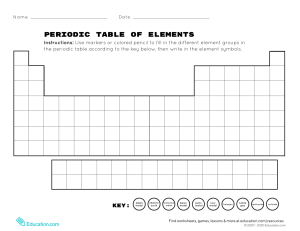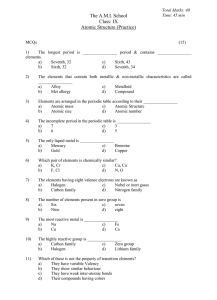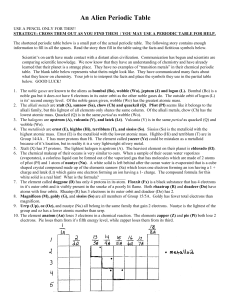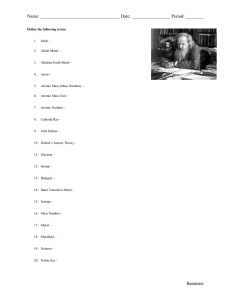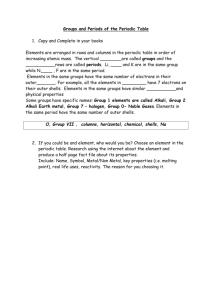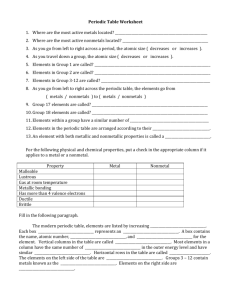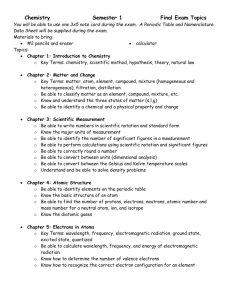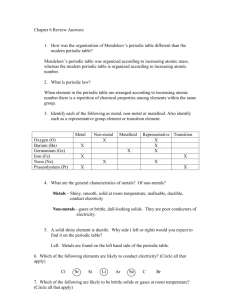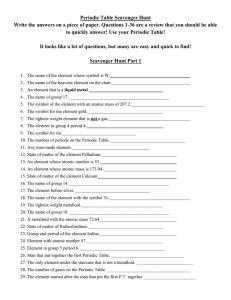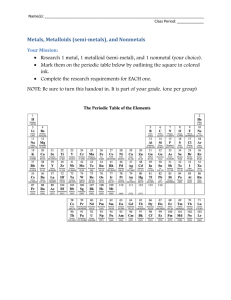Mars Periodic Table Puzzle: Chemistry Worksheet
advertisement
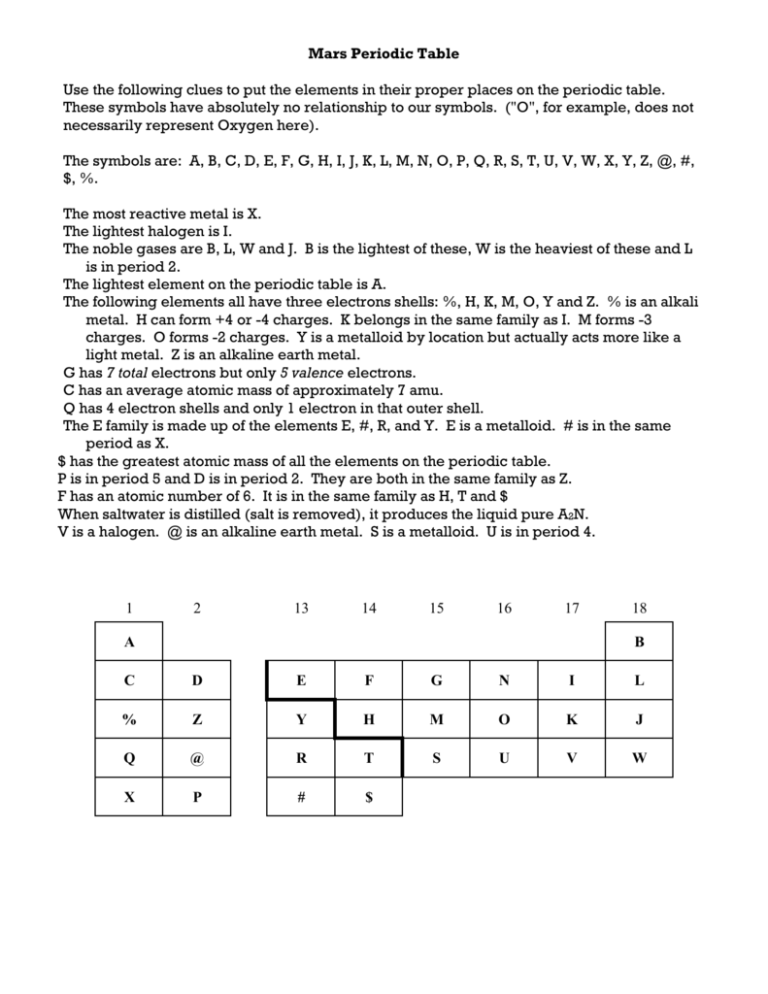
Mars Periodic Table Use the following clues to put the elements in their proper places on the periodic table. These symbols have absolutely no relationship to our symbols. ("O", for example, does not necessarily represent Oxygen here). The symbols are: A, B, C, D, E, F, G, H, I, J, K, L, M, N, O, P, Q, R, S, T, U, V, W, X, Y, Z, @, #, $, %. The most reactive metal is X. The lightest halogen is I. The noble gases are B, L, W and J. B is the lightest of these, W is the heaviest of these and L is in period 2. The lightest element on the periodic table is A. The following elements all have three electrons shells: %, H, K, M, O, Y and Z. % is an alkali metal. H can form +4 or -4 charges. K belongs in the same family as I. M forms -3 charges. O forms -2 charges. Y is a metalloid by location but actually acts more like a light metal. Z is an alkaline earth metal. G has 7 total electrons but only 5 valence electrons. C has an average atomic mass of approximately 7 amu. Q has 4 electron shells and only 1 electron in that outer shell. The E family is made up of the elements E, #, R, and Y. E is a metalloid. # is in the same period as X. $ has the greatest atomic mass of all the elements on the periodic table. P is in period 5 and D is in period 2. They are both in the same family as Z. F has an atomic number of 6. It is in the same family as H, T and $ When saltwater is distilled (salt is removed), it produces the liquid pure A2N. V is a halogen. @ is an alkaline earth metal. S is a metalloid. U is in period 4. 1 2 13 14 15 16 17 A 18 B C D E F G N I L % Z Y H M O K J Q @ R T S U V W X P # $
